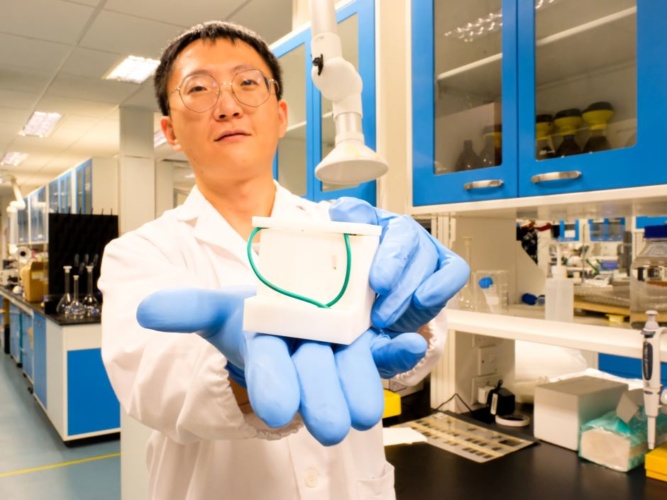The advance from Nanyang Technological University, Singapore (NTU Singapore) has been developed at a fraction of the cost of devices with comparable capabilities that weigh up to 30kg compared to the 100g prototype device.
T-rays help to characterise psoriasis and skin cancer
The NTU team adds that most equipment used to assess skin conditions provides 2D images of the skin surface, but their device maps out the depth of the ridges and grooves of the skin at up to 2mm.
Commenting on the development, Dr Yew Yik Weng, a Consultant Dermatologist at the National Skin Centre and an Assistant Professor at NTU’s Lee Kong Chian School of Medicine, said: “The device could be especially useful in studies involving wound healing, as we are currently lacking a tool that maps the length and the depth of skin ridges. Currently, we rely on photographs or measurements in our trials which could only provide a 2D assessment.”
The key component of the NTU device is PEDOT:PSS, a polymer commonly used in solar panels. To use the device, a person pushes a button to press a gold-coated film onto the subject’s skin to obtain an imprint. This causes sebum, an oily substance produced by the skin, to be transferred onto the film, creating an imprint of the skin surface.
The 5x5cm imprint of the skin is then transferred to the portable device where a set of electrodes is immersed in a solution. With another push of a button, the device triggers a flow of electric charge, causing PEDOT:PSS to be deposited on the surfaces of the gold-coated film in areas that are not covered with sebum. This results in a high-resolution 3D map of the skin, which reflects the ridges and grooves of the subject’s skin.

Using pig skin as a model, the researchers demonstrated that the technology was able to map the pattern of various wounds such as punctures, lacerations, abrasions, and incisions.
The team also showed that even the complex network of wrinkles on the back of a human hand could be captured on the film. The thin film is also flexible enough to map features on uneven skin areas, such as the creases of an elbow and fingerprints. Their results are published in Analytica Chimica Acta.
First author of the study, Fu Xiaoxu, a PhD student from NTU’s School of Civil and Environmental Engineering, said: “The 3D skin mapping device is simple to operate. On top of that, a 1.5V dry battery is all that is necessary to run the device. It is an example of a basic, yet very effective application of electrochemistry, as no expensive electronic hardware is required.”
Clinical trials are expected to take place later in the year.




Glasgow trial explores AR cues for autonomous road safety
They've ploughed into a few vulnerable road users in the past. Making that less likely will make it spectacularly easy to stop the traffic for...